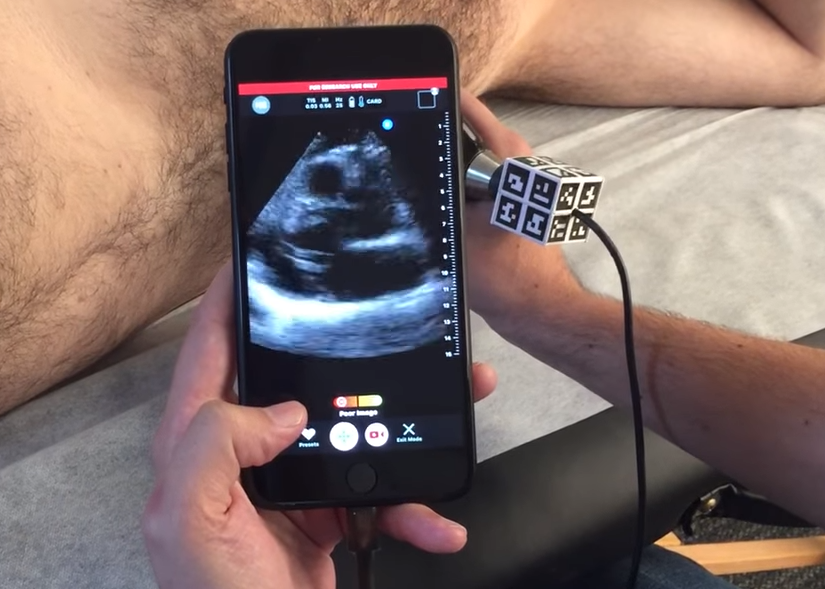Butterfly Network's smartphone ultrasound device launches in UK

A device that converts a smartphone into an ultrasound machine has launched in the UK.
The UK launch comes two years after the device from Butterfly Network got clearance from the FDA, and manufacturer Butterfly Network has lofty ambitions for the device.
The technology is based around an ultrasound sensor that plugs into a smartphone and uses the device’s screen to display the images.
Conventional ultrasound technology is based around different sized probes that are tailored to tackle various age groups and/or parts of the body.
But Butterfly’s technology allows for a single probe usable on the whole body, and an app to capture images and patient information.
Butterfly’s probe houses three transducers and 10,000 sensors in a single device, and has already been approved by the FDA in 13 clinical applications, including procedural guidance, cardiac, abdominal, gynaecological, and musculoskeletal settings.
Scans from the device called Butterfly iQ can be sent to a secure cloud and even to the PACS radiology software system commonly found in many hospitals.
With these series of improvements compared with conventional ultrasound schemes, Butterfly's device is less expensive at around £1,699.
Butterfly’s device is competing with point of care ultrasound machines that can be used at a patient’s bedside, not the top-tier devices used by radiologists.
Users can switch between various different scan types with the device’s dedicated app, which optimises settings.
There is also software to guide the user to get a better image, and it can measure a variety of parameters.
The UK launch follows CE mark clearance earlier this year allowing the device to be used in the UK, Europe, Australia and New Zealand.
Based in Guilford, Connecticut, Butterfly Network was founded in 2011 by Dr Jonathan Rothberg and has already raised $250 million investment from backers such as The Bill & Melinda Gates Foundation, Fidelity, and Fosun Pharma.
Valued at around $1.25 billion, the serial entrepreneur Rothberg was inspired to create the device by his daughter, who has tuberous sclerosis complex and requires ultrasound scans to keep track of multiple tumours that grow in her body as a result of the disease.
Rothberg, who had already made his name in DNA sequencing, came up with the idea for the device after pondering the inefficiency of her treatment and the unwieldiness of available equipment, according to Forbes.













